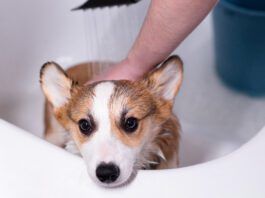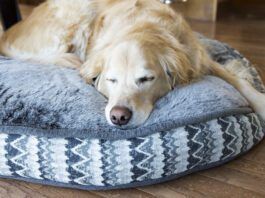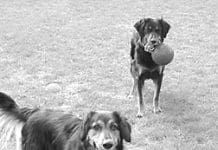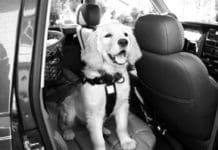Letters 06/99
I just lost my dear buddy, Brando, a wonderful Rottie, to cancer. It was a brief but utterly intense battle. I found Brando at work two and a half years ago. I know God sent me this dog; he was the greatest gift I have ever received. He was totally mellow and loved all creatures. Part of our journey together was to help the world be more “Rottie friendly.” We achieved that goal a bit but also occasionally felt the pain of “Rottie racism.”
Apple Cider Vinegar: A Holistic Remedy for Dogs
What's new in holistic pet care? Try apple cider vinegaror, as its fans call it, ACV. Okay, it isn't new, but this centuries-old product is enjoying new popularity in canine circles. Those who are old enough remember when Dr. D.C. Jarvis of Vermont made apple cider vinegar a household word with his 1958 best seller Folk Medicine. According to Jarvis, native Vermonters used cider vinegar to cure migraine headaches, arthritis, diabetes, obesity, indigestion, and a host of other ailments.
The Best Way to Get Skunk Off A Dog
When I was growing up, I knew a family that kept a dog just for finding and killing skunks. My friends lived on a big cattle ranch, and all their dogs had jobs. They had a couple of Australian Kelpies for working cattle, a number of tall, rangy hounds for hunting wild pigs, and then there was poor Frank, the skunk dog. I don't remember where my friends had obtained Frank, or even what breed of dog he was, but I recall that there had been numerous cases of rabies in the county where I lived as a child, and that skunks were the main carriers.
Answers From Experts 04/99
St. John’s Wort (Hypericum perforatum) IS often used in topical wound healing creams and ointments, as it demonstrates broad-spectrum antimicrobial activity. Taken internally, however, it has not demonstrated any ability to heal injuries, but has well-documented abilities to lift depression and lessen anxiety.
Letters – 05/99
The Product News and Reviews article in the February 1999 issue compelled me to write. As a groomer of both dogs and cats, I was alarmed at your choices and limited selection of nail trimming devices. I wouldn’t recommend nor use any of the ones you featured. If one is used for too long, a nail grinder will heat up the nail and send shooting pain through the nerve up the animal’s leg. And like you so clearly said, it may be difficult to even get the grinder near a dog, much less his nails.
Food For Thought
I switched Duke’s food to one of your top picks, and in just the few months that he has been on this food I have noticed a much healthier dog.
How To Grieve For the Death of a Dog
As with the death of a relative or close friend, losing a dog can have long-lasting effect on the owner's lifestyle. For example, I am surprised to realize that I have not been cross-country skiing or running (both previously major activities) since the death of my first Malamute, Omaha Beagle, well over 10 years ago. Grieving is a painful, yet necessary process. At the time of the pet's death, owners may lose perspective, tending to focus on all the bad experiences associated with the last few days, weeks and sometimes months prior to the pet's demise.
Flower Essence Therapy For Dogs
We know from innumerable modern research studies that a person's immune strength and resistance can be improved through a positive mental outlook, and that people who are happy heal more quickly than emotionally depressed people. Stated simply: emotional states can affect the physical body. Most veterinary health care professionals would probably agree that the principle is true for animals, too. For example, most healthy dogs are usually happy dogs or is it the other way around? And have you noticed how, just as with people, very often an anxious or angry dog also tends to be prone to more injuries and illness than a content and cheerful dog?
Strict Supervision Needed
As we were going to press with this issue, we received a report of a dogs death due to ingestion of a small part...
Answers From Experts 03/99
Megaesophagus truly is a horrible condition, both for the dog, who really suffers, and for the dog’s owner, who can’t do very much to help. However, there are a couple of holistic healing methods that I’ve seen help dogs with megaesophagus. I use a lot of homeopathy in my practice, so of course, my first suggestion is to use homeopathy, which is entirely dependent on the body’s ability to respond. Homeopathy is “energy medicine;” the purpose is to present the energy picture of a specific problem to the body so the body will raise a defense, a response to that trigger at both the physical and the energy level.
Toxic Lawns?
We all love seeing our dogs run and frolic on turf – but we seldom consider the chemicals that may be dangerous to their health.
How to Help Car Anxiety in Dogs: Road Scholar
Car rides. Some dogs love them. Some dogs hate them. Helping car anxiety in dogs, and getting a calm passenger is a step-by-step process.















